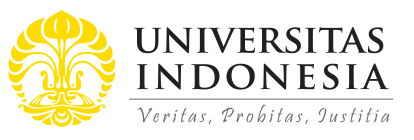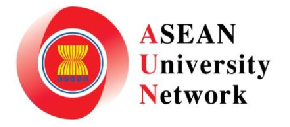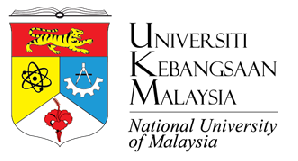
Abstract
The Republic Act 10912, otherwise known as the Continuing Professional Development (CPD) Act of 2016, was passed into law to promote and upgrade the practice of healthcare professions in the Philippines. Since the establishment of the Association of Southeast Asian Nations (ASEAN) Economic Community (AEC), CPD has been considered an area of development through which Filipino professionals are trained to become globally competitive. The Philippine government upholds several agreements made among ASEAN member-states, including recognizing professionals in every ASEAN country, facilitating the mobility of professions within the region, exchanging expertise on standards and qualifications, promoting best practices, and providing valuable opportunities for the training and capacity building. This policy analysis paper evaluated the advantages and disadvantages of the new law in terms of enhancing the capability of professionals through CPD programs. Thus, this article identified the benefits and burden experienced by Filipino healthcare professionals since its enactment. To name a few, the advantages include improving professional competencies, acquiring and refining the necessary knowledge and skills for career advancement, achieving personal and professional growth, and becoming globally competitive while the disadvantages include high cost and expense, inaccessibility and unavailability of CPD programs, additional requirement despite the work overload, lack of support, time constraints among family and loved ones, and limitations of rest and relaxation. Policy directives in addressing these salient issues in the implementation of the law are also recommended. The CPD is indeed a critical factor in ensuring that Filipino healthcare professionals are empowered and globally competitive. In return, their societal contributions will benefit the country’s welfare and economic growth, continued development toward AEC and globalization, and community engagement within the ASEAN region through mobility.
References
Alsop, A. (2013). Continuing professional development in health and social care: Strategies for lifelong learning. John Wiley & Sons.
Al-Sulaiti, F., Fares, H., Awaisu, A., & Kheir, N. (2020). Continuing professional development needs of community pharmacists in Qatar: a mixed-methods approach. International Quarterly of Community Health Education, 41(3), 285-292.
https://doi.org/10.1177/0272684X20918048
Andrews, S. (2010). Human resource management. McGraw-Hill Publishing Company Ltd.
ASEAN Secretariat. (2015a). Mutual recognition arrangement in services.
http://www.asean.org/storage/images/2015/October/outreach-document/Edited%20MRA%20Services-2.pdf
ASEAN Secretariat. (2015b). Requirement of continuous professional development.
http://www.asean.org/wp-content/uploads/2012/05/Requirements-for-CPD-21st-AJCCN.pdf
Borrico, C. B. C. (2020). Registered nurses perception on continuing nursing education. Asia Pacific Higher Education Research Journal (APHERJ), 7(2).
https://po.pnuresearchportal.org/ejournal/index.php/apherj/article/view/1664
Berndt, A., Murray, C. M., Kennedy, K., Stanley, M. J., & Gilbert-Hunt, S. (2017). Effectiveness of distance learning for continuing professional development (CPD) for rural allied health practitioners: a systematic review. BMC Medical Education, 17(117). https://doi.org/10.1186/s12909-017-0949-5
Cepeda, M. (2020, July 28). List: 21 priority bills of Duterte in SONA 2020. Rappler.
https://www.rappler.com/newsbreak/iq/list-priority-bills-duterte-sona-2020
Charles, P. A. & Mamary, E. M. (2002). New choices for continuing education: A statewide survey of the practices and preferences of nurse practitioners. Journal of Continuing Education in Nursing, 33(2), 88-91. https://doi.org/10.3928/0022-0124-20020301-12
Chipchase, L. S., Johnston, V., & Long, P. D. (2012). Continuing professional development: The missing link. Manual Therapy, 17(1), 89-91.
https://doi.org/10.1016/j.math.2011.09.004
Cleofas, J. V., & Rocha, I. C. N. (2021). Demographic, gadget and internet profiles as determinants of disease and consequence related COVID-19 anxiety among Filipino college students. Education and Information Technologies, 26, 6771-6786.
https://doi.org/10.1007/s10639-021-10529-9
Cranton, P. (2016). Continuing professional education for teachers and university and college faculty. New Directions for Adult and Continuing Education.
https://doi.org/10.1002/ace.20194
Fowler, E., & Harrison, P. L. (2001). Continuing professional development needs and activities of school psychologists. Psychology in the Schools, 38(1), 75-88.
https://doi.org/10.1002/1520-6807(200101)38:1%3C75::AID-PITS8%3E3.0.CO;2-M
Golnik, K. (2017). Eye Health. Community Eye Health Journal, 30(97), 1.
http://www.cehjsouthasia.org/wp-content/uploads/2017/06/CEHJSA97_CPD.pdf
Haji Mustapa, M. B., Teo, Y. C., Haji-Abdul-Rahman, H. K., Abdul-Mumin, K. H., & Rahman, H. A. (2021). Enablers and barriers of continuous professional development (CPD) participation among nurses and midwives. International Journal of Nursing Education, 13(3). https://www.ijone.org/scripts/IJONE_July_Sept.2021.pdf#page=80
Hapal, D. K. (2018, February 8). For struggling professionals, CPD is expensive and not realistic. Rappler. https://www.rappler.com/nation/195581-cpd-act-continuing-professionals-education-woes-not-realistic/
Hernandez, K. H. (2017, July 17). Health workers rally vs new license regulations. The Manila Times. https://www.manilatimes.net/2017/07/17/news/national/health-workers-rally-vs-new-license-regulations-2/338932
Inventor-Miranda, W. C. (2015, January 20). Continuing professional development–a must? Business Mirror. https://businessmirror.com.ph/2015/01/20/continuing-professional-development-a-must/
Julian, J. F., & Ruiz, F. B. (2020). Continuing professional development (CPD) among educators in selected Colleges of Nursing: perceived importance, impact, and challenges. Enfermeria Clinica, 30, 60-64. https://doi.org/10.1016/j.enfcli.2019.09.025
Kataoka-Yahiro, M. R., & Mobley, J. (2011). Benefits, barriers, and intentions/desired of nurses related to distance learning in rural island communities. Journal of Continuing Education in Nursing, 42(3), 127-135.
https://doi.org/10.3928/00220124-20101201-01
Keane, S., Lincoln, M., & Smith, T. (2012). Retention of allied health professionals in rural New South Wales: a thematic analysis of focus group discussions. BMC Health Services Research, 12(175). https://doi.org/10.1186/1472-6963-12-175
Kennedy, A. (2005). Models of continuing professional development: A framework for analysis. Journal of In-service Education, 31(2), 235-250.
https://www.tandfonline.com/doi/abs/10.1080/13674580500200277
Lopez, V. (2020, July 27). Duterte asks congress to amend continuing professional development law. GMA News.
Magsambol, B. (2020, May 6). Low pay, high risk: The reality of nurses in the Philippines. Rappler. https://www.rappler.com/newsbreak/iq/salary-nurses-philippines
Official Gazette of the Philippines. (2016). An act mandating and strengthening the continuing professional development program for all regulated professions, creating the continuing professional development council, and appropriating funds therefor, and for other related purposes.
http://www.officialgazette.gov.ph/2016/07/21/republic-act-no-10912/
Oducado, R. M. F., & Palma, J. A. F. (2020). Nurses’ awareness and participation in mandatory continuing professional development in the Philippines: A pilot survey. Jurnal Ners dan Kebidanan, 7(1), 135-142. https://doi.org/10.26699/jnk.v7i1.ART.p135-142
Orale, R. L., Gomba, F. E., Fabillar, L., & Quebada, A. E. (2016). Are conventions an effective continuing professional development activity? Journal of Academic Research, 1(3), 1-11.
Palma, J. A. F. S., Oducado, R. M. F., & Palma, B. S. (2020). Continuing professional development: Awareness, attitude, facilitators, and barriers among nurses in the Philippines. Nursing Practice Today, 7(3), 198-207.
https://doi.org/10.18502/npt.v7i3.3348
Peek, C., McCall, M., McLaren, B., & Rotem, T. (2000). Continuing medical education and continuous professional development: International comparisons. BMJ, 320(7232), 432-435. https://doi.org/10.1136/bmj.320.7232.432
Penz, K., D’Arcy, C., Stewart, N., Kosteniuk, J., Morgan, D. & Smith, B. (2007). Barriers to participation in continuing education activities among rural and remote nurses. Journal of Continuing Education in Nursing, 38(2), 58-93.
https://doi.org/10.3928/00220124-20070301-03
Professional Regulation Commission. (2013). Revised guidelines on the continuing professional development program for all registered and licensed professionals. https://www.prc.gov.ph/uploaded/documents/RES_CPD_RevisedGuidelines_2013-774.pdf
Professional Regulation Commission. (2015). ASEAN mutual recognition agreement. https://www.prc.gov.ph/asean-mra
Professional Regulation Commission. (2017). Implementing rules and regulations of Republic Act 10912, known as the continuing professional development act of 2016. https://www.prc.gov.ph/uploaded/documents/CPD_IRR_p.pdf
Professional Regulation Commission. (2018). CPD frequently asked questions (FAQs). https://www.prc.gov.ph/sites/default/files/CPD-FAQs-62918.pdf
Professional Regulation Commission. (2019). CPD notice.
https://www.prc.gov.ph/article/cpd-notice/4168
Ramos, M. S. (2017, July 31). Professionals sign petition questioning requirements for license renewal. Philippine Daily Inquirer. https://newsinfo.inquirer.net/919181/professionals-sign-petition-questioning-requirements-for-license-renewal
Rocha, I. C. N. & Arcinas, M. M. (2020). Quality of life of Filipino caregivers of children in need of special protection: Correlations with their role overload and role distress. Journal of Caring Sciences, 9(4), 173-181. https://doi.org/10.34172/jcs.2020.027
Rodriguez, F. (2021, June 30). CPD important and why does it matter? The Manila Times. https://www.manilatimes.net/2021/06/30/business/top-business/cpd-important-and-why-does-it-matter/1805167
Richards, L. & Potgieter, E. (2010). Perceptions of registered nurses in four state health institutions on continuing formal education. Curations, 33(2), 41-50.
https://doi.org/10.4102/curationis.v33i2.1087
Rivera, K. (2017, July 14). Certified public disaster. Philippine Daily Inquirer.
Ross, K., Barr, J., & Stevens, J. (2013). Mandatory continuing professional development requirements: What does this mean for Australian nurses? BMC Nursing, 12(9). https://doi.org/10.1186/1472-6955-12-9
Schostak, J., Davis, M., Hanson, J., Schostak, J., Brown, T., Driscoll, P., Starke, I., & Jenkins, N. (2010). The effectiveness of continuing professional development. College of Emergency Medicine, Academy of Medical Royal Colleges.
Summers, A., Dickerson, P. S. & Lubejko, B. G. (2015). Continuing professional development in Australia: Barriers and support. Journal of Continuing Education in Nursing, 46(8), 337-339. https://doi.org/10.3928/00220124-20150721-11
Te, V., Griffiths, R., Law, K., Hill, P. S., & Annear, P. L. (2018). The impact of ASEAN economic integration on health worker mobility: a scoping review of the literature. Health Policy and Planning, 33(8), 957-965. https://doi.org/10.1093/heapol/czy071
Tilleczek, K., Pong, R., Tilleczek, S. C. K., & Caty, S. (2005). Innovations and issues in the delivery of continuing education to nurse practitioners in rural and northern communities. Canadian Journal of Nursing Research, 37(1), 146-162.
https://cjnr.archive.mcgill.ca/article/view/1931
Torregoza, H. (2017, July 30). Continuing professional development hitches rued, inquiry sought. Manila Bulletin.
http://news.mb.com.ph/2017/07/30/continuing-professional-devt-hitches-rued-inquiry-sought/
Trillanes, A. F. (2017). Senate resolution 441. Senate of the Philippines.
http://legacy.senate.gov.ph/press_release/2017/0730_trillanes1.asp
Tullao, T. S. (2000). An evaluation on the readiness of Filipino professionals to meet international competition. Philippine Institute for Development Studies.
Turner, S., Hobson, J., D’Auria, D., & Beach, J. (2004). Continuing professional development of occupational medicine practitioners: A needs assessment. Occupational Medicine, 54, 14-20. https://doi.org/10.1093/occmed/kqg119
Udani, Z. A. S. (2002). Continuing professional education: Training and developing Filipino professionals amidst globalization. Philippine Institute for Development Studies.
Yfantis, A., Tiniakou, I., & Yfanti, E. (2010). Nurses’ attitudes regarding continuing professional development in a district hospital of Greece. Health Science Journal, 4(3), 193. https://www.proquest.com/openview/fea395d07b6311ddb510ca3309367e7c/1?cbl=237822&pq-origsite=gscholar
Zhao, Y, Liu, J., & Awol, E. (2015). Developing support systems for rural teachers’ continuing professional development. SAGE Publications.
Recommended Citation
Crispino, Kevin T. and Rocha, Ian Christopher N.
(2021).
Enhancing Healthcare Professional Practice in the Philippines toward ASEAN Integration through the Continuing Professional Development Law.
ASEAN Journal of Community Engagement, 5(2), 376-395.
Available at: https://doi.org/10.7454/ajce.v5i2.1141
Included in
Adult and Continuing Education Commons, Development Studies Commons, Educational Assessment, Evaluation, and Research Commons, Health Law and Policy Commons, Labor and Employment Law Commons, Nursing Commons, Other Medicine and Health Sciences Commons, Other Social and Behavioral Sciences Commons, Public Affairs, Public Policy and Public Administration Commons







